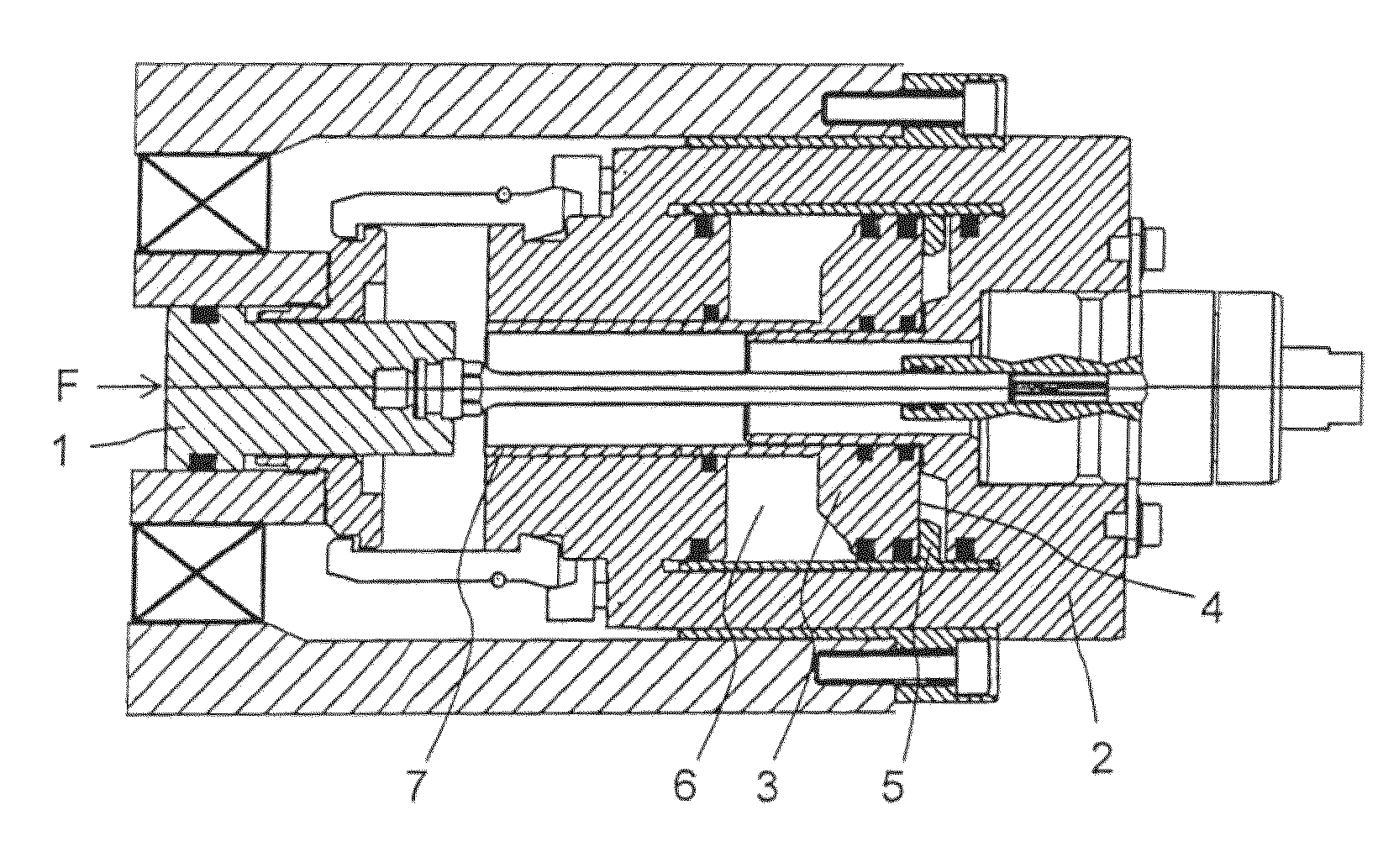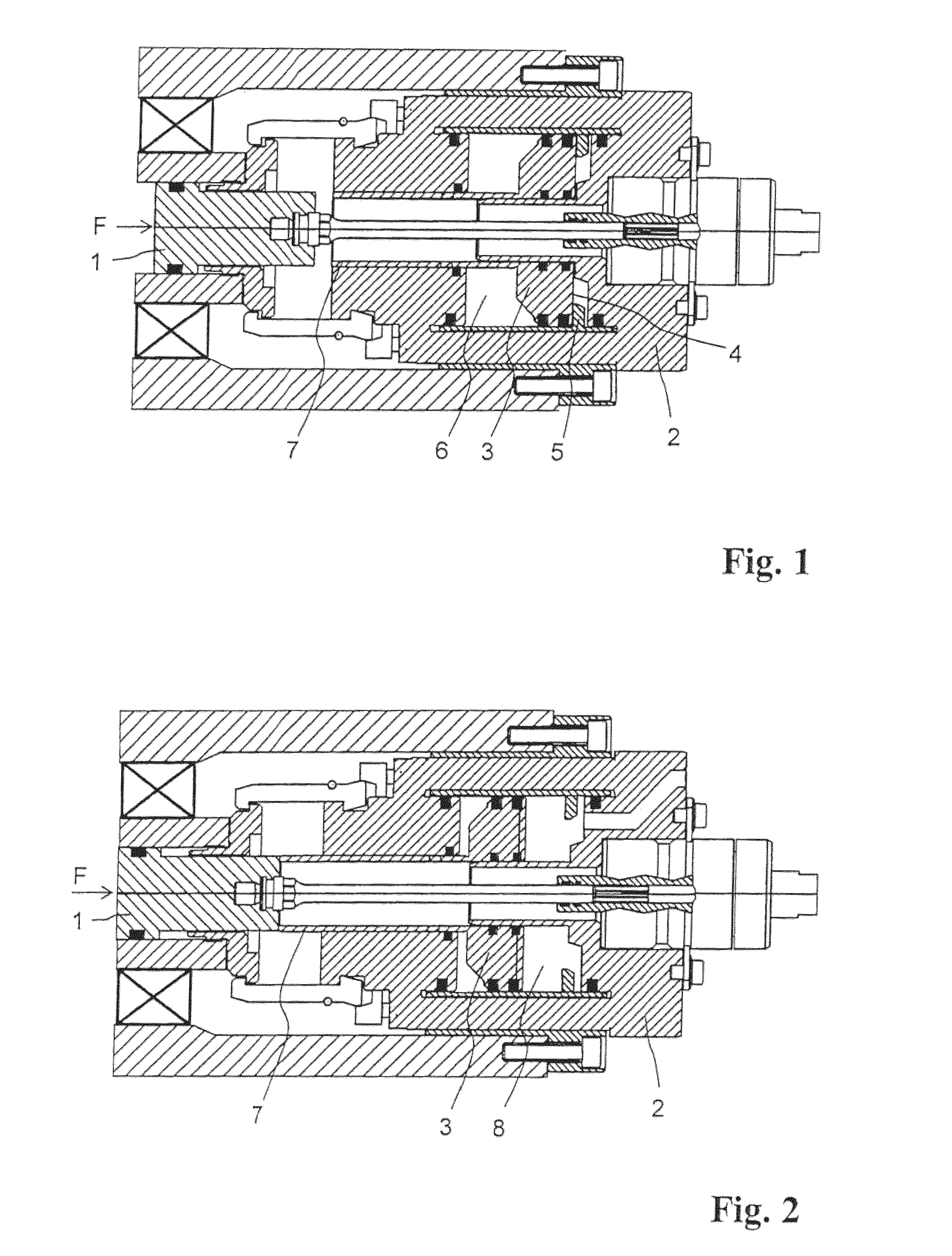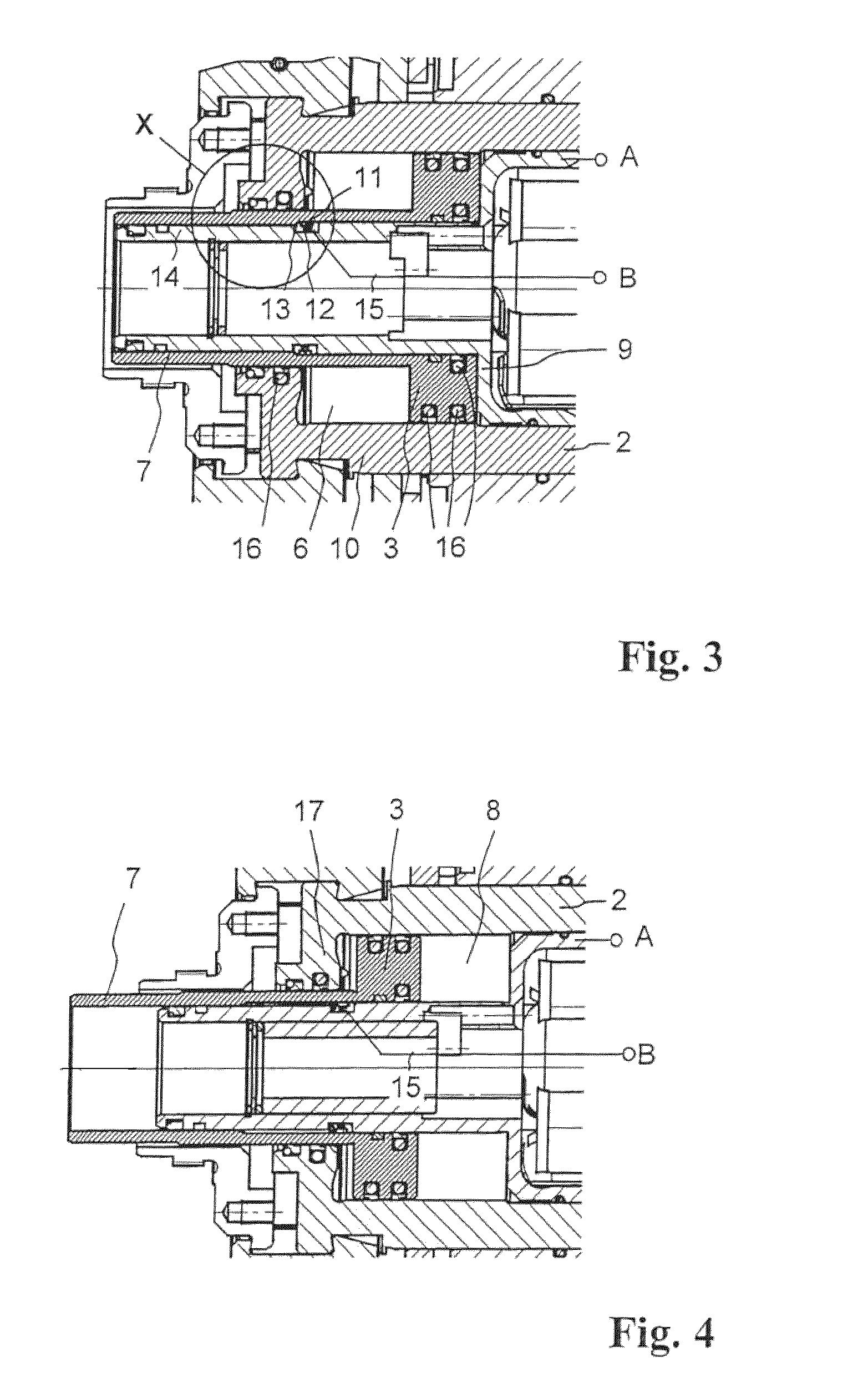Tool clamping device
a clamping device and tool technology, applied in the direction of turning apparatuses, metal-working holders, supports, etc., can solve the problem of time gain for each completed par
- Summary
- Abstract
- Description
- Claims
- Application Information
AI Technical Summary
Benefits of technology
Problems solved by technology
Method used
Image
Examples
first embodiment
[0026]a tool clamping device according to the invention with a sensor for detecting the position of the tool release piston is explained below with reference to FIGS. 3 to 5. Here, FIG. 3 shows, like FIG. 1 before, a cutout from a tool clamping device of the type forming the basis here. However, relative to FIG. 1, a few components, among these, in particular, the drawbar 1, are left out and therefore the remaining components are shown in detail. According to the invention, the tool release piston 3 functions as a component of an electrical switch, as described below. For forming this switch, the rear wall 9 of the cylinder 2 is contacted electrically and guided to an external connection terminal A. The rear wall 9 of the cylinder 2 is here, in contrast to the schematic diagram of FIG. 1, a part that is separate from the side wall 10, because the cylinder 2 must be open on one side for inserting the tool release piston 3.
[0027]The tool release piston 3 is electrically contacted in t...
second embodiment
[0036]FIG. 7 schematically shows the invention, wherein the partial view of a tool clamping device corresponds to that of FIG. 3, that is, represents the clamped position with the tool release piston 3 in its rear end position. As can be seen in FIG. 7, in the region of the hollow cylindrical section 7 of the tool release piston 3 projecting in the direction of the drawbar, both within and also outside the hollow cylinder, two annular capacitor electrodes 18 and 19 or 20 and 21 are arranged in the axial direction one next to the other and adjacent to each other, wherein there is a specified spacing in the axial direction between the two inner-lying electrodes 18 and 19 and the two outer lying electrodes 20 and 21.
[0037]The capacitor electrodes 18 to 21 are arranged similar to the insulation ring 12 of the first embodiment each in separately formed annular grooves that are not shown for the sake of simplicity in FIG. 7 and are necessarily electrically insulated relative to the guide ...
third embodiment
[0047]FIG. 9 schematically shows the invention, wherein the partial view of a tool clamping device there similarly corresponds to that of FIG. 3, that is, represents the clamped position with the tool release piston 3 in its rear end position. As can be seen in FIG. 9, in the region of the hollow cylindrical section 7 of the tool release piston 3 projecting in the direction of the drawbar both within and also outside the hollow cylinder, a coil 24 or 25 is present at a specified mutual axial spacing.
[0048]The coils 24 and 25 are arranged just like the insulating ring 12 of the first embodiment in separately formed annular grooves that are not shown in FIG. 9 for the sake of simplicity. Through the use of highly permeable material as the coil body, i.e., covering the mentioned grooves with such material, penetration of the magnetic field into the surrounding material of the guide body 14 can be largely prevented in order to improve the intended measurement effect described below. As ...
PUM
| Property | Measurement | Unit |
|---|---|---|
| electrically conductive | aaaaa | aaaaa |
| capacitance | aaaaa | aaaaa |
| total capacitance | aaaaa | aaaaa |
Abstract
Description
Claims
Application Information
 Login to View More
Login to View More - R&D
- Intellectual Property
- Life Sciences
- Materials
- Tech Scout
- Unparalleled Data Quality
- Higher Quality Content
- 60% Fewer Hallucinations
Browse by: Latest US Patents, China's latest patents, Technical Efficacy Thesaurus, Application Domain, Technology Topic, Popular Technical Reports.
© 2025 PatSnap. All rights reserved.Legal|Privacy policy|Modern Slavery Act Transparency Statement|Sitemap|About US| Contact US: help@patsnap.com



